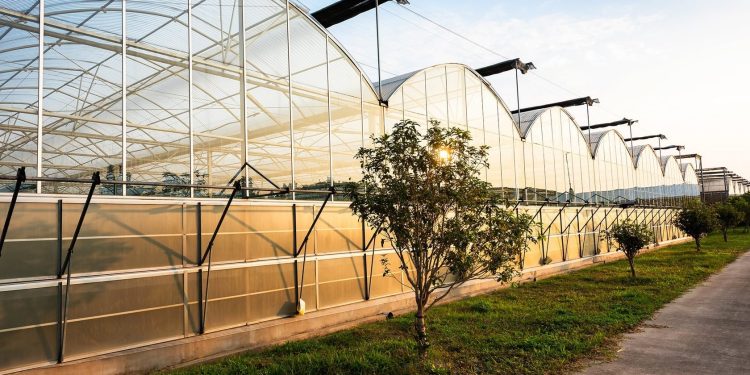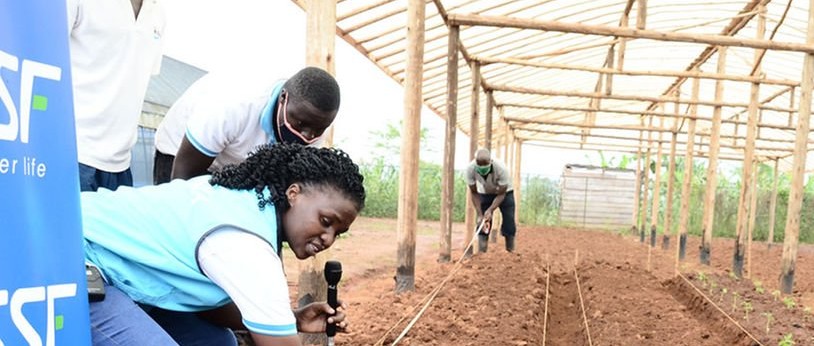#agriculture #greenhousefarming #vegetableproduction #Kazakhstan #agriculturaleconomics #energycosts #governmentsupport
According to the latest data from Energyprom.kz, the utilized greenhouse area in Kazakhstan has decreased from nearly 1,500 hectares to only 1,200 hectares, representing an 18.1% decline. The major contributing factor to this negative trend has been the reduction in the areas of farmer-owned greenhouses, accounting for a decrease of 210.3 hectares or 24.7% in 2022. Industrial greenhouses of agricultural enterprises also experienced a decline, although less significant, with a reduction of 43 hectares or 16.4%.
As a result of the shrinking greenhouse areas, the overall production of cucumbers and tomatoes grown in protected ground in 2022 reached only 182,400 tons, nearly one-third less than the 256,500 tons harvested in 2021.
The southern regions of Kazakhstan, including the Turkistan, Almaty, Zhambyl, and Shymkent areas, account for 76.3% of all greenhouse vegetable production. These regions have favorable climatic conditions, making it cheaper to cultivate crops in enclosed complexes compared to the harsher winters experienced in the northern and eastern regions. The Turkistan region’s farms lead in supplying greenhouse vegetables to Kazakhstani markets.
However, the winter of 2022 had a catastrophic impact on the southern greenhouse farms due to unprecedented freezing temperatures. Many greenhouse enterprises suffered colossal losses, with representative Saken Kanibekov from the Association of Greenhouse and Horticultural Farmers of Turkistan region and Shymkent reporting that 90% of southern greenhouse farms are now approaching bankruptcy.
One of the main challenges faced by southern farmers during the winter was the critical situation with coal supply. When temperatures dropped to minus 30 degrees Celsius, many greenhouses lacked fuel for heating. Even a slight temperature decrease for a few days can destroy the season’s work for greenhouse crops. As a result, farmers had to discard tons of immature frozen tomatoes.
However, the scarcity and high cost of fuel are just one item on the long list of barriers hindering the development of greenhouse business in Kazakhstan. For more than five years, experts from the Association of Southern Greenhouse Farmers have been sending letters to the Ministry of Agriculture, the Prime Minister, and the President, highlighting the dismal state of this sector of agriculture. Systemic industry problems contribute to a high cost of vegetables, and during the off-season, domestic produce cannot compete in price with imported cucumbers and tomatoes. Even considering logistics and other export expenses, suppliers from neighboring Central Asian countries enter the Kazakhstani market at lower prices. The representative of the Association mentioned that Kazakhstani farmers work under non-competitive conditions due to significant differences in utility tariffs.
To level the playing field for Kazakhstani agronomists and entrepreneurs compared to their counterparts in neighboring countries, farmers have long been urging the government to introduce state subsidies per hectare for greenhouses and partial compensation for energy resources. According to the Minister of Agriculture, Erbol Karashukeev, the government is ready to provide such subsidies to greenhouse farmers, but they must first obtain a certificate of compliance with production technologies.
Meanwhile, as promises to address the farmers’ issues are made, the prices of greenhouse vegetables in Kazakhstani stores have significantly exceeded the food inflation rate. This disparity is particularly noticeable when comparing the price index of cucumbers with the average index for food products. During the peak season for greenhouse vegetables, from December to March, the price per kilogram of cucumbers ranged from 957 to 1,244 tenge, an increase of 47.5% to 56.8%. In contrast, the average price increase was within 25% to 26%.
Tomato prices during the off-season also exceeded 1,000 tenge per kilogram, but compared to cucumbers, the inflationary indexes for tomatoes were not as dramatically high, ranging from 20% to 32%.
The decline in greenhouse areas in Kazakhstan poses significant challenges for the country’s agriculture sector, particularly affecting vegetable production. The reduction in cultivated areas and the subsequent decrease in yields have led to an increased reliance on imported greenhouse vegetables. Farmers face numerous obstacles, including high energy costs, dependency on imported inputs, and inadequate government support. Urgent measures, such as state subsidies and energy resource compensation, are needed to revitalize the greenhouse industry and ensure its sustainability.










